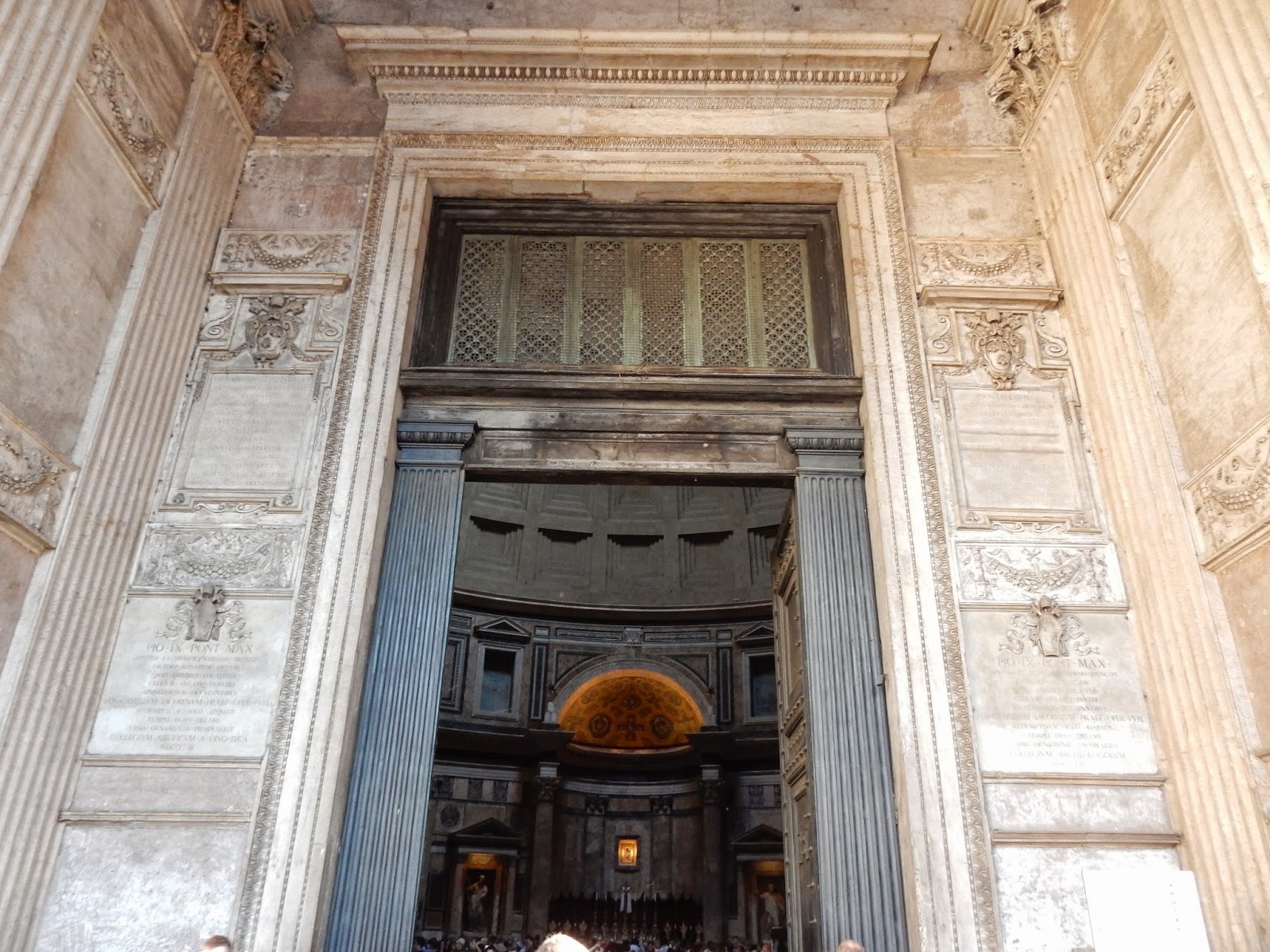Following class, we didn't have a scheduled outing. We decided, thanks to the insight of Fr. Paris, to go to McDonalds. We decided to get unhealthy fast food not because we wanted it (which some of us did) but because this particular McDonalds is renowned as one of the best McDonalds restaurants worldwide. Due to its location by the Spanish Steps in the heart of old Rome, the city required certain things of the restaurant for it to be deemed acceptable. The result is a 400 person restaurant that surpasses the quality of many non-fast food restaurants in even the US.
The following 3 pictures are courtesy of Fr. Paris, who took them when the restaurant was closed. When we went, the place was packed.
 |
| The damage; a second trip was made after this by some, FYI |
 |
| Electronic ordering kiosk, available in numerous languages, which allow fully customizable meals down to the lettuce and tomato on your burger and how much ketchup you would like |
After finishing our meal, some people returned to the villa. I went with a group to do some church-hopping. We first made our way up the Spanish Steps. Unfortunately, a concert was being held at the bottom and some construction was being done at the top so the picture is lacking in wonder.
We made our way the over to Santa Maria della Concezione dei Cappuccini (Our Lady of the Conception of the Capuchins). This church was also a suggestion of Fr. Paris'.
The church itself is not very spectacular, but people don't travel to the church to visit its interior. Attached to the church is a Capuchin museum (with fascinating artifacts inside) which provides an entrance to the crypts below.
In the 1600s, the Capuchin monks moved from their old monastery to this new church. When they did, they brought along all of their deceased friars as well in a few hundred cartloads (3,700 bodies altogether).
One of the priests at the time then oversaw the arrangement of these bones in various crypts under the church, each crypt being decorated with various sections of bone to create intricate designs and structures. The result is 6 rooms each based on different themes: the Crypt of the Three Skeletons, the Crypt of the Leg Bones and Thigh Bones, the Crypt of the Pelvises, the Crypt of the Skulls, the Mass Chapel, and the Crypt of the Resurrection.
In the first crypt (Three Skeletons), a sign is placed in the center which states in 5 languages: "What you are now we used to be; what we are now you will be..." Designs in the crypts include entire wall niches made of bone, flowers, light fixtures, and even some full skeletons dressed in Capuchin robes.
The word that I used to describe the place was "bizarre". It was definitely something that I had never seen before. Unfortunately, pictures were not allowed and tenants were in each crypt so I couldn't sneak a picture. Here is a blog site made a number of years ago that has some pictures of what we saw to give you a sense: http://www3.sympatico.ca/tapholov/pages/bones.html.
The church, known formally as Santa Maria dei Martiri (St. Mary of the Martyrs), holds the title as one of the oldest Catholic churches in Rome. This is thanks, once again, to the fact that it was converted from a pagan temple to "all the gods" (translation of "pantheon") to a Catholic church.
 |
| The oculus in the center of the cement ceiling, which serves as the only source of light in the church apart from lights illuminating paintings and statues |
The Pantheon was featured in Angels and Demons as housing the tomb of Raphael, the famous Renaissance artist. Naturally, I had to find it and document it.
 |
| The church also houses the tomb of Vittorio Emanuele II, the first king of unified Italy, "Father of the Fatherland" |
The church is home to Michelangelo's Cristo della Minerva, better known as "Christ the Redeemer". The original sculpture had Jesus entirely nude, but a girdle was added in the Baroque period due to fears of it sending false messages.
Under the High Altar in the church is buried St. Catherine of Siena - well, her body. Having seen her body, we now have seen "all" of St. Catherine of Siena (her head being in St. Dominic's in Siena).
 |
| Altar with the body of St. Catherine of Siena in a tomb below |
In the Piazza della Minerva, just outside the front of the church, stands Bernini's Elephant and Obelisk. Simply put, it's an elephant with an obelisk on top. The only thing of note regarding this piece is that some believe that, in a slight against the Inquisition, Bernini has the elephant "passing wind" in the direction of the adjacent building which housed the headquarters of the Inquisition at the time. Very funny, Bernini.
Our last stop for the day was at Santa Maria Maddalena, a church that we went into just because it was there. The Order of the Camillians (Clerics Regular, Ministers to the Sick) runs the church and their influence is noted throughout by the distinctive red cross. St. Camillus de Lellis, founder of the Camillians, is the patron saint of the sick; this red cross is the original "red cross", founded hundreds of years before the "Red Cross" as we know of today.
 |
| The body of St. Camillus in a glass coffin |
Our mini group then had dinner nearby and had some good discussion.
We returned to the villa for some much needed sleep.
Tomorrow, we have a free day to do as we please!
Thus ends the 14th day.
.JPG)

.JPG)



























No comments:
Post a Comment